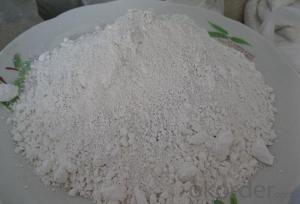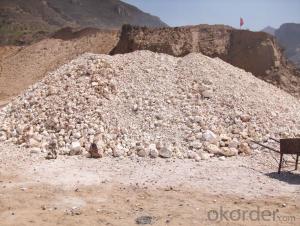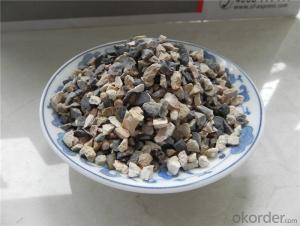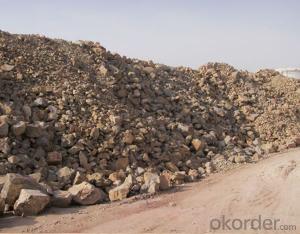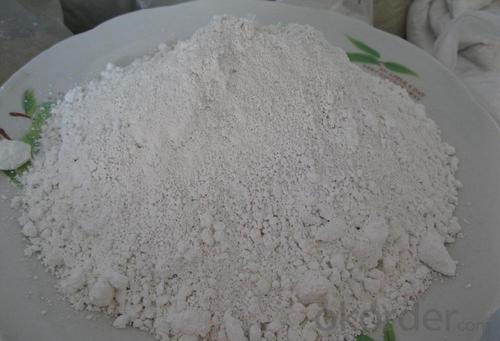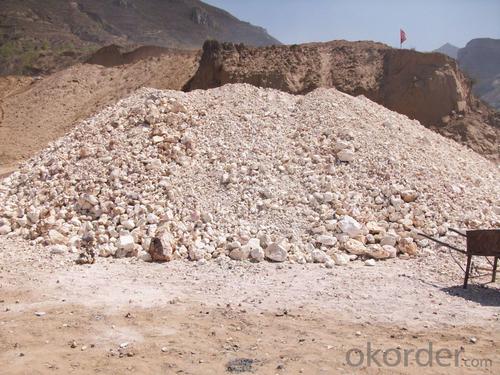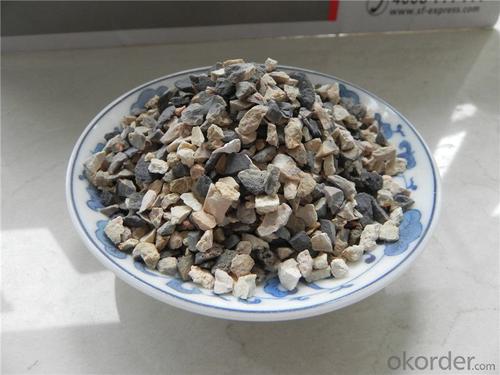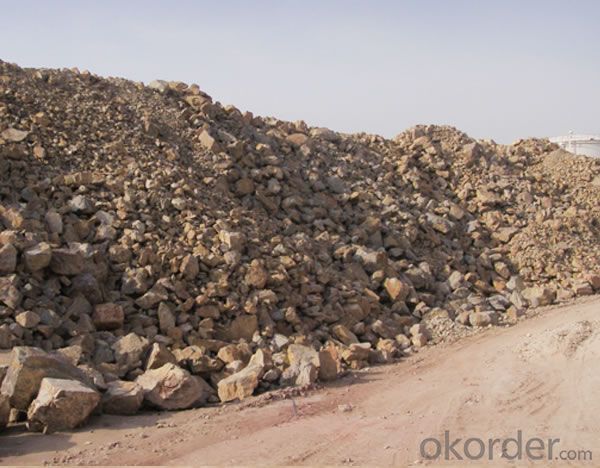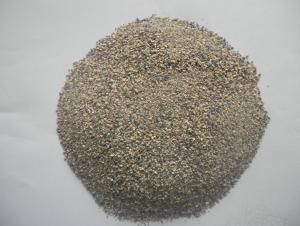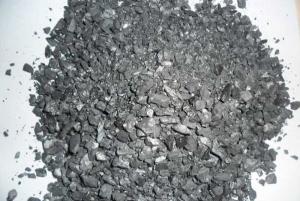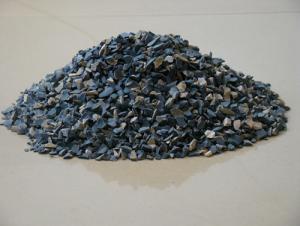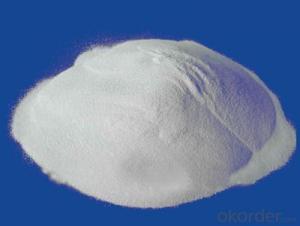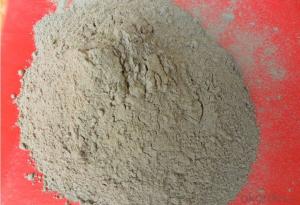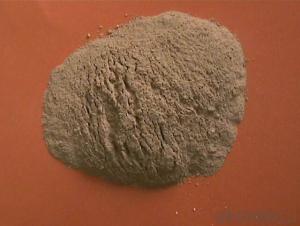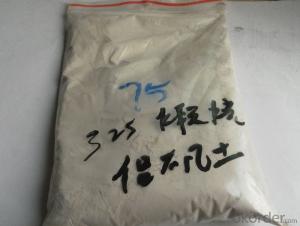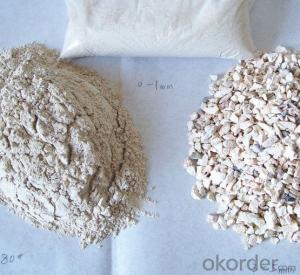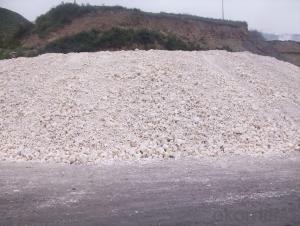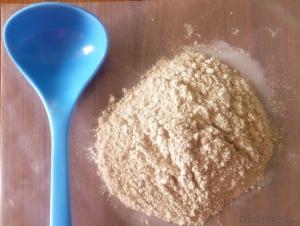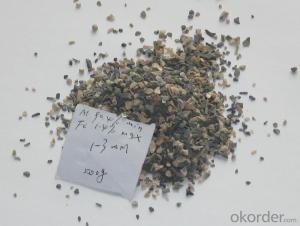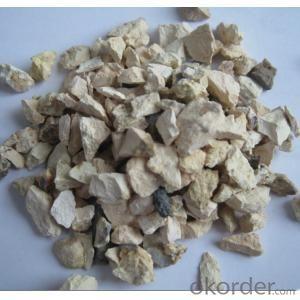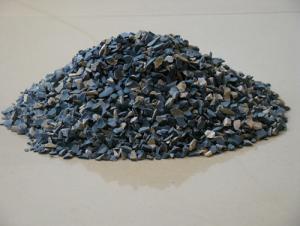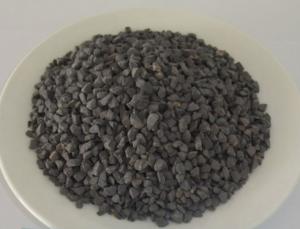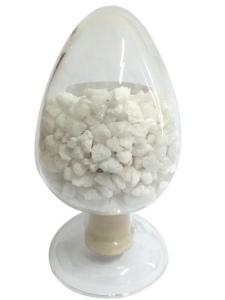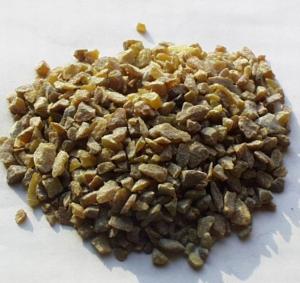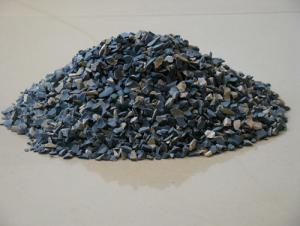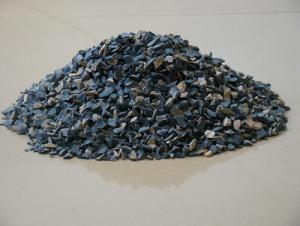Raw Materials for Refractory:83% Rotary/Shaft/Round Kiln Alumina Calcined Bauxite
- Loading Port:
- Tianjin
- Payment Terms:
- TT OR LC
- Min Order Qty:
- 25 m.t.
- Supply Capability:
- 3000 m.t./month
OKorder Service Pledge
OKorder Financial Service
You Might Also Like
83% Rotary/ Shaft/ Round Kiln Alumina Calcined Bauxite Refractory Raw Material
Specifications
1. We directly supply calcined bauxite
2. Al2O3:70%/75%/80%/85%/86%/88%/90%
3. Size:0-1-3-5-8-10/200mesh/325mesh/400mesh/500mesh
Size of 83% Rotary/ Shaft/ Round Kiln Alumina Calcined Bauxite Refractory Raw Material:
Lumps /Grains:0-1mm,1-3mm,3-5mm,5-8mm /Powders:100mesh, 200mesh,325mesh
Application of 83% Rotary/ Shaft/ Round Kiln Alumina Calcined Bauxite Refractory Raw Material::
mainly used in aluminium metallurgy,aiso used in abrasive ,cement ,chemical, refractory
Product Description:
Bauxite, alumina or bauxite miner , main ingredients are aluminum oxide, hydrate alumina containing impurities,
is an earthy mineral.White or grey, brown yellow or light red by iron.From 4 to 3.9 g/cm3 density, hardness, 1 ~ 3, opaque, very brittle.
Very difficult to melt.Insoluble in water, soluble in sulfuric acid, sodium hydroxide solution.Mainly used for aluminium, refractory material.
Calcined Bauxite Grade:
Shaft Kiln Bauxite
Rotarty Kiln Bauxite
Round Kiln Bauxite
Packaging & Delivery
Packaging Details: In bulk or in 1-1.25mr bag
Product Pictures:
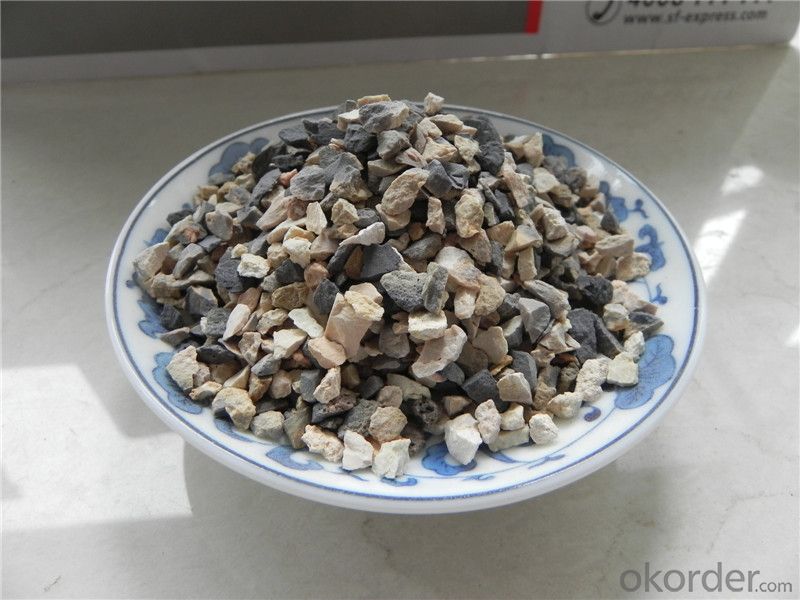
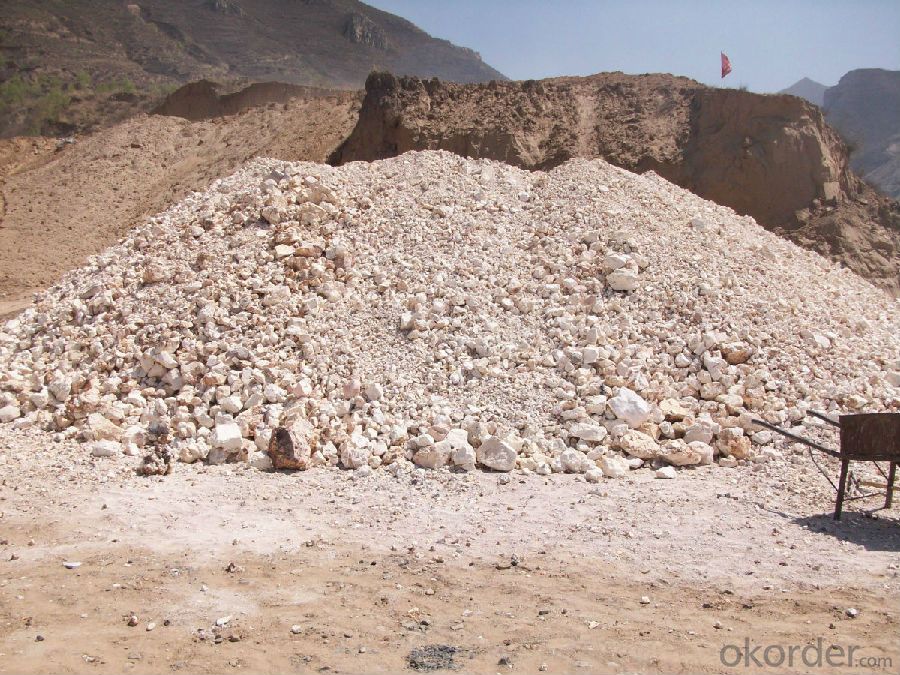
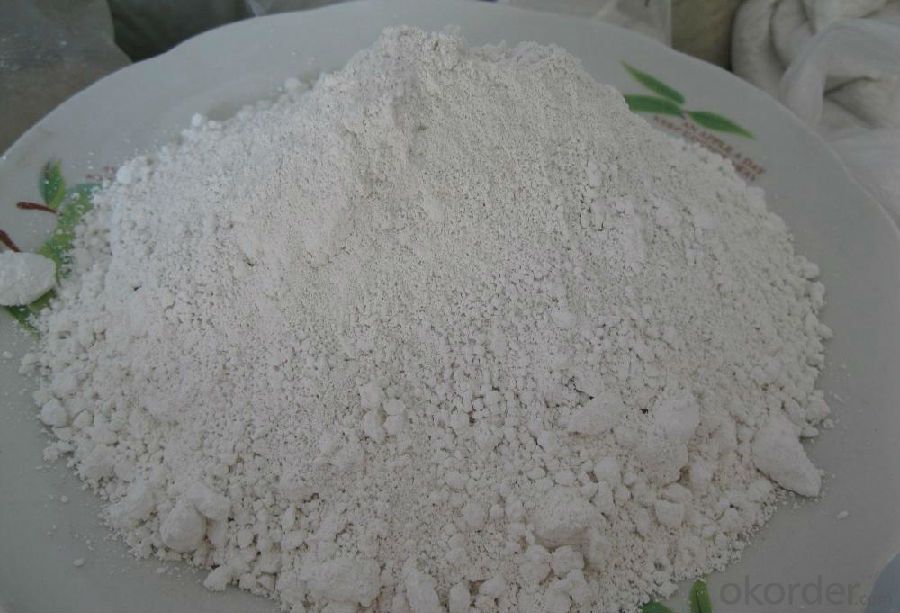
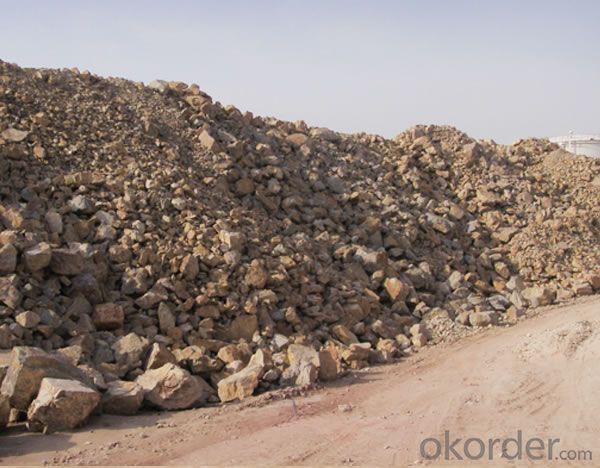
Our Service:
1. Your inquiry related to our products or prices will be replied in 24hours.
2. Manufacturer with large capacity, ensure the fast production cycle after confirmed the order.
3. Our professional technicians will answer your entire enquiry in patient.
4. To meet the refractory solutions, we can serve as your instructions.
5. Protection of sales area and private information for our entire customer.
If you’ve kind enquiries, please don’t hesitate to let us know. ^_^
- Q: What is refractory brick?
- Capability1. Refractory brick is also known as firebrick. It is faint?yellow or brownish. Refractory brick with 770 ℃ at high temperatures is called for short firebrick. It is mainly used for building and smelting furnace. It is a refractory material made by fring refractory clay or other refractory material.
- Q: Technical scheme of refractory for refuse incinerator
- Incinerator conditions and requirements for refractory lining1, working conditions: deal with rare earth, furnace body normal use temperature of 800~900 degrees.2, the specific requirement for refractory: refractory has good resistance to acid corrosion, thermal shock performance good stability and good high temperature.
- Q: What are some of the new refractories and what are their characteristics?
- These refractory materials can be bought in Zhengzhou real gold refractory materials factory. If necessary, we can visit the factory in Xinmi first.
- Q: what is the requirements of roofing insulation materials fire rating?
- The fireproofing requirements of architectural design are regulated by architectural design fire?safety?rules, roofing insulation material only has the requirements of materials combustion performance, namely non-combustible material. No fire rating requirements.
- Q: Which are fireproofing external wall materials?
- 1. Acording to national standard GB8624-97, the combustion performance of construction materials are classified as: Grade-A: incombustible building material: Grade-A WW thermal insulation material which hardly burns. Grade-B1: nonflammable building material: nonflammable building material has good flame resistance. It is difficult to burn or spread in the air or at high temperature. Grade-B1: nonflammable building material: nonflammable building material has good flame resistance. It is easy to burn in the air or at high temperature, thus spreading the fire, such as wooden column, timber roof truss, timber beam and wooden stairway. Grade-B3: inflammable building material. Without fire resistance, inflammable building material is easy to burn and thus cause a fire. 2. According to fireproofing performance, external wall thermal insulation materials can be classified as: 1. Thermal insulation material with Grade-A combustion performance: WW inorganic thermal insulation material, rock wool, glass wool, foam glass, foamed ceramics and foam cement. 2. Thermal insulation material with Grade-B1 combustion performance: XPS panel after special treatment/ PU, phenolic aldehyde, gelatine powder polyphenyl granule after special treatment. 3. Thermal insulation material with Grade-B2 combustion performance: EPS, XPS, PU, PE, ETC.
- Q: What are the characteristics of magnesium fireproof plate
- Plate glass magnesium fire with high temperatures, flame retardant, sound absorption, shock-proof, pest control, anti-corrosion, non-toxic tasteless non-polluting, can be used directly on the painting, direct veneers, available gas nail directly on the tile, the surface has good coloring , high strength, resistance to bending toughness, nails, saw, can be sticky, easy decoration. It can also be made into thermal insulation materials with a variety of compround composite insulation plate.
- Q: I am a manufacturer of refractory materials. I would like to receive some orders from abroad. I would like to know what foreign trade companies in Dalian place foreign orders abroad
- You don't give a cent to this question, no one will answer it
- Q: Is aluminium oxide refractory material?
- Yes. It has high melting and boiling point, stable chemical?property. All refractory material almost contains aluminium oxide. Refractory materials have a large range and need specific requirements. Refractory material is divided into sizing refractory material, shapeless refractory material, ceramic fiber, refractory bricks and castable refractory. It can be subdivided according to temperature rating. Hope it is helpful to you.
- Q: Which refractory is suitable for the tunnel kiln?
- The refractories produced by the following ten manufacturers are relatively good. They are all being the top ten brands! 1. king coconut (Chinese well-known trademarks, famous brand, the nation's largest manufacturer of wood panels, large building materials chain enterprises, Hangzhou king coconut Holding Group Co., Ltd.) 2. Fuxiang (founded in 1998, the leading professional sheet production outstanding enterprises, Fuxiang Industrial Co., Ltd.) 3. Bunny (China famous brand, China Top brand, plywood industry iconic brand, large listed companies, high-tech enterprises, Edward Bunny decoration materials Co., Ltd. 4. new Millennium boat ( Chinese well-known trademarks, famous trademarks in Zhejiang, Zhejiang famous brand, well-known trademarks in Hangzhou, Zhejiang Province key forestry enterprises, the Millennium boat Group Hangzhou Huahai Wood Industry Co., Ltd.) 5. Jin Luli (China famous brand, Chinese brand-name products, Shandong Province, to wood-based panels and steel-based enterprises, hundred private enterprises in Shandong Province, Luli Group Co., Ltd.) 6. Albert (professional fire protection board development / production and marketing of the modern manufacturer, the introduction of advanced production technology industry HPL) 7. desert oasis (China famous brand lumber, China's top ten brands plate, sheet famous Chinese brand, oasis Wood) 8. Peng Che-hung (professional fire protection board development / production and marketing of the modern manufacturer, the introduction of advanced production technology industry HPL ) 9. Worldwide (professional magnesium fire plate glass production and sales of integrated large-scale well-known enterprises, famous brands Firewood industry) 10. Mogan (national key high-tech enterprises, China's largest and most influential environment-friendly decorative materials production one of the enterprises, Zhejiang Hua Yunfeng new material Co., Ltd.)
- Q: Classification of porosities in refractories and their effects on properties
- The first two types of stomata are commonly examined, known as apparent porosity.
Send your message to us
Raw Materials for Refractory:83% Rotary/Shaft/Round Kiln Alumina Calcined Bauxite
- Loading Port:
- Tianjin
- Payment Terms:
- TT OR LC
- Min Order Qty:
- 25 m.t.
- Supply Capability:
- 3000 m.t./month
OKorder Service Pledge
OKorder Financial Service
Similar products
Hot products
Hot Searches
Related keywords
